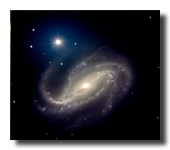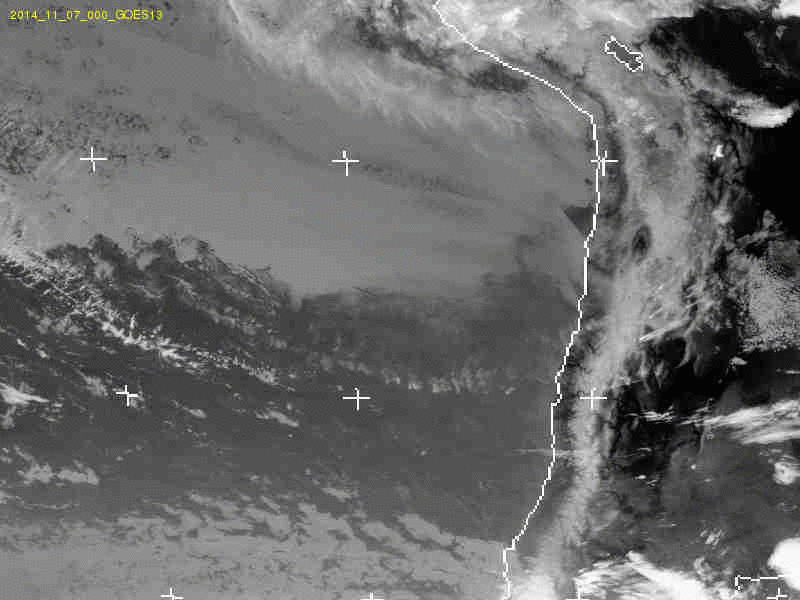Numerical simulations have developed over recent decades into a crucial tool for physics, astrophysics and cosmology. In particular, numerical simulations offer the only possibility to investigate the non-linear process of structure formation due to gravitational instability in the dark matter distribution in our Universe, as well as the complex interplay of this structure formation with the astrophysical processes that affect the visible (baryonic) material in our Universe (star formation, supernovae, AGN feedbacks). Such simulations furnish the theoretical predictions of our standard cosmological model, which may then be compared to the wide range of available data about galaxy clustering, galaxy evolution, weak and strong lensing, and other observables.
Furthermore, simulations provide a unique opportunity to investigate the consequences of theories that attempt to explain the still mysterious dark sector of our Universe (dark matter and dark energy). One example ithe MOdified Newtonian Dynamics (MOND) paradigm which attempts to explain the phenomenological aspects of dark matter by means of a modification of the Newtonian gravitational force. The consequences of such a modification are profound, and would impact all aspects of the evolution of our Universe, from cosmology to galaxy formation and evolution. Many researchers have proposed alternative models to explain dark energy, including modifications of Einstein's theory of gravity, General Relativity, as well as the inclusion of new matter/energy components, such as a scalar field referred to as "quintessence". Finally, there may be interactions within the dark sector that unite both dark matter and dark energy, giving rise to further interesting phenomenological consequences, that may be examined in simulations and compared with observations.
Numerical simulations are a fairly recent addition to the extragalactic group at IFA, yet there are several lines of research to investigate non-standard cosmological models:
- Numerical investigations of MOND: Dr. Graeme Candlish has investigated the consequences of MOND on galaxies by using the RAyMOND code developed by him in collaboration with researchers at the Universidad de Concepción, Chile and KASI, Korea. (Publication).
- The consequences of MOND for galaxy evolution: galaxies within dense environments would be subject to a MOND effect known as the "external field effect" that has no counterpart in Newtonian gravity. Several members of our group (Dr. Graeme Candlish, Dr. Yara Jaffé) in collaboration with researchers at Universidade de Sao Paolo and KASI, Korea, have investigated the consequences of this effect on galaxies within clusters.
- MOND cosmology: there is still no complete theory of a MOND cosmology, thus one of our projects involves the search for a possible complete MOND cosmological model, which may then be used to contruct a fully self-consistent MOND cosmological simulation.
- Dark energy/dark matter couplings: as stated earlier, it is entirely possible that the dark sector contains hidden surprises just waiting to be discovered. In this project we are investigating the possible cosmological consequences of different types of couplings between dark energy and dark matter, and their potential impacts at smaller scales.
Researchers in this area:
Students: Daniela Palma (Magister)
During the last decade, gravitational lensing is one of the few areas of astronomical research which has suffered a major development. Gravitational lenses have been converted into a powerful astrophysical tool in a wide variety of research fields, including: the scale for cosmological distances, the cosmic structure of the matter at large scales, the mass and its distribution in galaxy clusters, the physics of quasars and high-redshift galaxies, the haloes of dark matter in galaxies, among many others.
A gravitational lens is produced when the light from a distant source is deviated by a massive object (e.g. a galaxy or a cluster of galaxies) which lies along the line of sight to the observer. This effect makes the light from the distant object to be magnified and extended, boosting the probability for detection and incrementing its observed surface brightness. The gravitational lensing effect have been categorised in three main classes; (a) strong-lensing: that which produces rings, arcs and multiple imaging (with separation between images from 0.3 to 30 arc-seconds); (b) weak-lensing; that which produces weak distortions of distant objects, and it is observed statistically at the edge of massive objects, for example produced by groups or massive galaxy clusters; and (c) micro-lensing; that which produces micro-images of milli-arcsecond separations and manifest by an increment (or decrement) in the source brightness when monitored as a function of time.
To develop this field, our research group has endeavoured various collaborative projects which cover the following aspects of gravitational lensing:
- Strongly lensed galaxies, taken from the H-ATLAS and HerMES using the ALMA telescope at sub-millimetre wavelengths and by the JVLA, eMERLIN and EVN telescopes at radio wavelengths,
- Strong lensing effect produced by galaxy clusters identified in images and spectra taken with the telescopes Gemini and Hubble Space Telescope,
- Strong and weak lensing effect using groups of galaxies identified in data taken from the SL2S survey (created by the CFHT telescope), and analysing spectra taken with the VLT telescope,
- Micro-lensing effect produced by compact objects (e.g. black holes, stars, planets) to background stars from the galactic bulge using data from the VVV survey (taken with the VISTA telescope),
- Micro-lensing effect on extragalactic sources produced by compact objects (e.g. stars or sub-structure in dark matter haloes) in the haloes of the foreground galaxy using spectra taken with theVLT, MMT and WHT.
- STRong-lensing Insights into the Dark Energy Survey (STRIDES) search for new lensed quasar systems for cosmological applications (the evolution of elliptical galaxies, dark matter content).
- COSmological MOnitoring of GRAvItational Lenses (COSMOGRAIL) aims to measure time delays for most of the known lensed quasars (including the recently discovered by STRIDES).
Primary researchers in this area:
Professors: Verónica Motta - Eduardo Ibar
Students: Alejandra Melo (PhD) - Ramsés Jerez (MSc)
Past students: Evelyn Puebla (BSc.), Irma Fuentes (BSc.), Karina Rojas (BSc, MSc, PhD), Daniela Barrios (BSc), Ramsés Jerez (BSc)
Summer Practice students: Nicol Pizarro (UDLA), Francisca Contreras (UChile)
Postdocs: Thomas Hughes, Alejandra Muñoz-Arancibia
Past postdocs: Tomás Verdugo, Roberto Muñoz, Gael Foëx, Juan Magaña
Understanding the distant Universe is one of the major drivers in the development of astronomical observatories and space missions. By the end of this decade, Chile will host some of the biggest telescopes ever constructed, including ALMA, E-ELT and GMT. Our research group in extragalactic astronomy concentrates in the study of the evolution of the Universe and its content, taking advantage of the most powerful observatories in space (Hubble, Chandra, NuSTAR, Herschel) and Earth (VLT, VLA, ALMA, Gemini, APEX). In particular, we can classify our research in three main areas:





